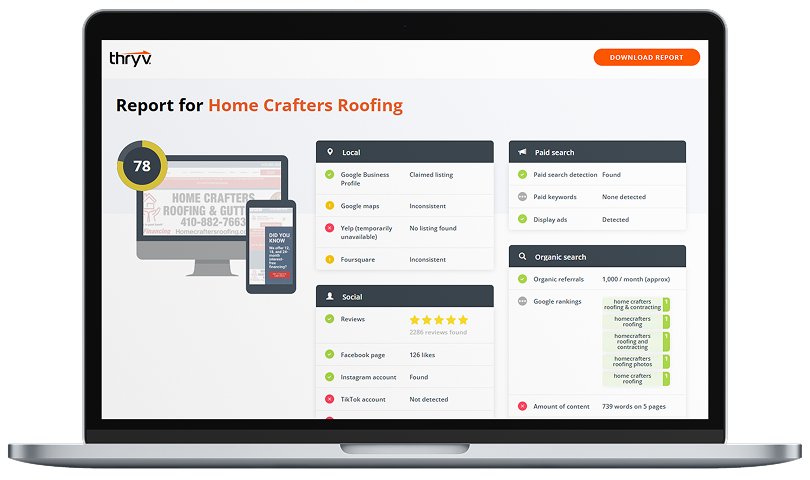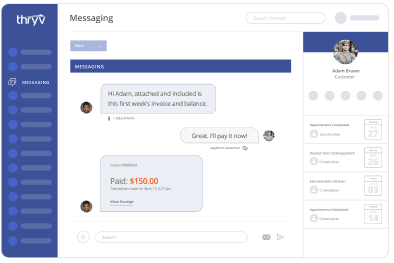The final stretch of the year is here, and for small business owners, the next 90 days can make all the difference. Your business sprint, from September through December, is a concentrated window to drive measurable results. By setting short-term business goals with the right goal-setting frameworks, focusing your team’s energy, and prioritizing high-impact tasks, you can unlock quick wins that maximize ROI before year-end.
We’ll zero in on marketing strategies for small businesses that work in real time so that you can close the year with momentum and head into January positioned for growth.
Marketing Strategies for Small Businesses
1. Set short-term business goals.
2. Prioritize high-ROI initiatives.
3. Leverage seasonal marketing opportunities.
4. Focus on customer retention.
5. Get clear on team roles.
6. Track performance in real time and pivot fast.
1. Set short-term business goals.
Think of the next 90 days as a focused campaign. Decide what absolutely must happen before December 31 to call it a win. That might mean increasing sales by 15%, adding 200 new qualified leads, or launching a new service before the holidays. Setting short-term goals will help you stay on track. To do this, you can use one of several goal-setting frameworks like OKRs (Objectives and Key Results) to connect your vision to measurable actions, or the SMART method (Specific, Measurable, Achievable, Relevant, Time-bound) to keep goals realistic. Post your goals where you and your team can see them daily, as visibility breeds accountability.
2. Prioritize high-ROI initiatives.
Time is limited, so avoid spreading your efforts too thin. Audit your marketing activities from earlier this year and identify what generated leads and revenue. Then, double down on those channels. For example, if last quarter’s email campaign drove a 12% conversion rate, plan a similar series but with seasonal offers. Or, if paid search ads have consistently brought in high-quality leads, increase the budget temporarily. The question to ask for every idea is: Will this drive measurable results within the next 90 days? If not, save it for January.
Build Stronger Relationships With Your Customers Using Our Mobile CRM Software for Small Businesses
Our robust CRM software helps you build better relationships with your existing customers and nurture new leads. You can also view and manage all your communications and interactions from anywhere, including on your mobile device or desktop computer.

3. Leverage seasonal marketing opportunities.
From September through December, buyers are in an active purchasing mindset. Align your marketing calendar with seasonal opportunities that already have urgency built in, like a Labor Day clearance, back-to-school specials, Black Friday/Cyber Monday, Small Business Saturday, and holiday gifting season. Craft messaging that feels timely and exclusive. For instance, “Limited Fall Collection—Only Available Through October 15” creates scarcity and action. And don’t forget to refresh creative assets with seasonal visuals and copy to signal to customers that your business is relevant right now.
4. Focus on customer retention.
We all know it’s cheaper and faster to sell to someone who already knows and trusts your brand. Use the fall sprint to re-engage and delight your existing customer base. Send a segmented email campaign with special VIP offers, launch a “Thank You” gift program for repeat buyers, or run a referral contest with prizes. If you have dormant customers, send a reactivation campaign, reminding them of what they loved, and pair it with a time-sensitive incentive. The goal is to turn one-time buyers into repeat revenue before the year ends.
5. Get clear on team roles.
In a sprint, ambiguity kills momentum. Assign one point person for each initiative, someone responsible for moving it from idea to completion. Set clear deliverables, deadlines, and check-in points. Consider using simple project management tools like Trello to keep everyone aligned without slowing them down. Keep meetings short and decision-focused; the aim is to remove bottlenecks, not create them. When everyone knows their role and deadline, you’ll see marketing initiatives move at the speed this season demands.
6. Track performance in real time and pivot fast.
A 90-day sprint leaves no room for “wait and see” marketing. Set up real-time tracking for your campaigns, whether through Google Analytics, your CRM, or platform-specific dashboards. Monitor key metrics daily or weekly, such as conversion rates, cost per lead, email click-through rates, and campaign ROI. If something isn’t delivering, adjust quickly by swapping out creative, refining your audience targeting, or shifting budget to higher-performing channels. This agile approach ensures every marketing dollar is working as hard as possible before the clock runs out.
Short-Term Business Goals Example
Phase 1: Sprint Kickoff (Early September)
- Revisit annual goals and define sprint targets: Align short-term goals (e.g. +15% sales, 200 qualified leads, launch a new holiday bundle) with your year-end ambitions, using OKRs or SMART objectives for clarity and accountability.
- Audit current marketing performance: Analyze which channels (email, paid ads, social media, SEO) drove results earlier in the year. Reinforce the ones with demonstrated ROI and deprioritize underperforming efforts.
Phase 2: Campaign Planning & Launch (Mid–September)
- Strategically plan around fall and holiday moments: Map out key seasonal opportunities like Labor Day, back-to-school, Halloween, Black Friday/Cyber Monday. Schedule promotions and theme campaigns to match each period.
- Define priority marketing initiatives: Identify up to three high-impact campaigns to focus on, such as an email VIP reactivation series, a limited-time paid social push, or a referral contest tailored for year-end conversions.
Phase 3: Execution & Progress Tracking (October to Mid-November)
- Assign roles and streamline execution: Ensure each campaign has one point person, clear timelines, and is backed by efficient tools like Trello to keep the team focused.
- Track performance in real time: Monitor key KPIs such as email open/click-through rates, conversion rates, cost-per-lead, and campaign ROI. Pivot quickly if performance dips—update creative, adjust targeting, or reallocate budget to higher-performing tactics.
Phase 4: Final Push & Wrap-Up (Late November to December)
- Execute last-minute sales tactics: Use urgency-driven strategies, like “24-hour flash deals,” countdown timers, or exclusive bundle offers, to close strong in the final weeks.
- Evaluate sprint results and capture learnings: By December, review what worked and what didn’t; the most successful areas of ROI, campaign types, and retention tactics. Document insights and update your sprint playbook for next year.
Fall Sprint at a Glance
| Sprint Stage | Key Actions |
| Kickoff (Early September) | Set sprint goals and audit channels. |
| Planning (Mid-September) | Prioritize three key initiatives, and map out seasonal opportunities. |
| Execution (October to Mid-November) | Run campaigns, track performance, and adjust tactics in real time. |
| Final Push & Wrap Up (Late November to December) | Launch urgency-driven offers, review performance, and document learnings |
Finish the Year With Focus, Not Friction
The final quarter isn’t about cramming in every possible marketing idea; it’s about choosing the right ones and executing them with precision. By setting clear short-term goals, prioritizing high-ROI initiatives, tapping into seasonal momentum, and keeping your team aligned, you can turn these next 90 days into your strongest finish yet.
See how Thryv can help you set smarter goals, automate marketing, and track results in real time. Schedule a free demo today and finish the year stronger than ever.


